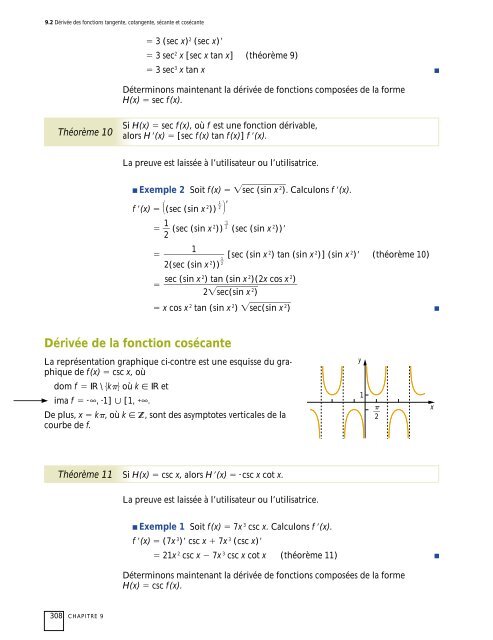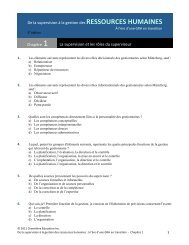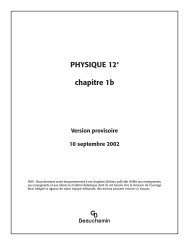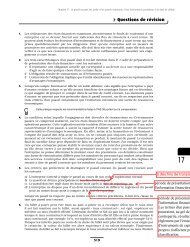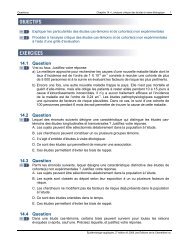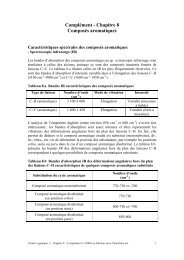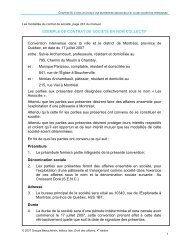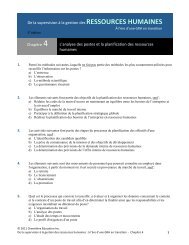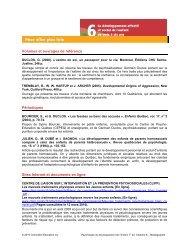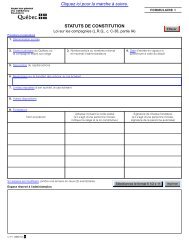You also want an ePaper? Increase the reach of your titles
YUMPU automatically turns print PDFs into web optimized ePapers that Google loves.
9.2 Dérivée des fonctions tangente, cotangente, sécante et cosécante 3 (sec x) 2 (sec x) 3 sec 2 x [sec x tan x] (théorème 9) 3 sec 3 x tan xDéterminons maintenant la dérivée de fonctions composées de la formeH(x) sec f(x).Théorème 10Si H(x) sec f(x), où f est une fonction dérivable,alors H(x) [sec f(x) tan f(x)] f (x).La preuve est laissée à l’utilisateur ou l’utilisatrice.■ Exemple 2 Soit f(x) sec(s in x 2 ). Calculons f (x).f (x) (sec (sin x 2 )) 1 2 1 2 (sec (sin x 2 ))-1 2(sec (sin x 2 ))1 [sec (sin x 2 ) tan (sin x 2 )] (sin x 2 ) (théorème 10)2(sec (sin x 2 )) 1 2sec (sin x2 ) tan (sin x 2 )(2x cos x 2 )2sec( si n x 2 ) x cos x 2 tan (sin x 2 ) sec( si n x 2 )Dérivée de la fonction cosécanteLa représentation graphique ci-contre est une esquisse du graphiquede f(x) csc x, oùy7dom f IR \ {k} où k IR etima f -∞, -1] [1, ∞.De plus, x k, où k z, sont des asymptotes verticales de lacourbe de f.1 2xThéorème 11 Si H(x) csc x, alors H(x) -csc x cot x.La preuve est laissée à l’utilisateur ou l’utilisatrice.■ Exemple 1 Soit f(x) 7x 3 csc x. Calculons f (x).f (x) (7x 3 ) csc x 7x 3 (csc x) 21x 2 csc x 7x 3 csc x cot x (théorème 11)Déterminons maintenant la dérivée de fonctions composées de la formeH(x) csc f(x).308 CHAPITRE 9


